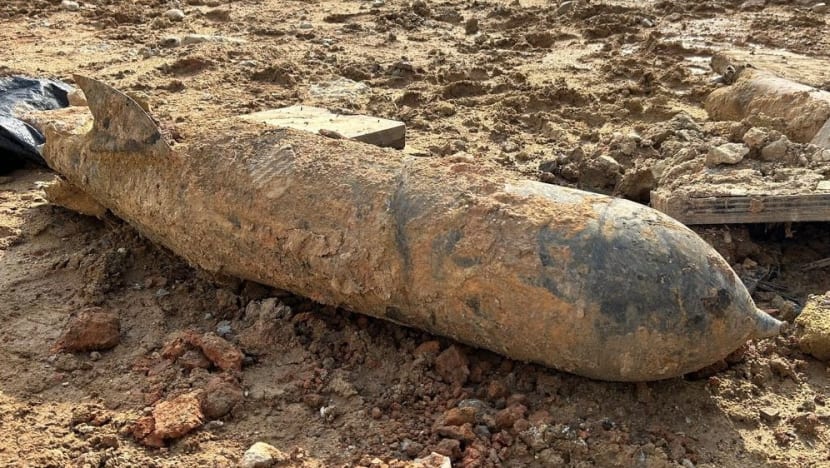SINGAPORE (CNA) – 4000 residents and workers will be evacuated on Tuesday from Upper Bukit Timah where a 100 kilogramme aerial bomb from World War II had been discovered and will undergo a controlled disposal on-site.
A 200-metre cordon around the site will also be in place, along with road closures.
CNA spoke to experts to unearth what goes into the detonation of an explosive war relic that has been left underground for decades.
The bomb is likely to be a “type 94” that was used by the Japanese, said Winson Chew, an explosive ordnance disposal (EOD) specialist with Blastwork Solutions.
He said it was crucial to identify the device so that EOD professionals know what type of fuse it has and the safety approach required.
Decades of exposure to the elements are likely to have caused corrosion, which means any nomenclature on the device could be hard to read.
The most accurate way would thus be to measure its dimensions, said Chew, who spent about 15 years in the 36th Battalion of the Singapore Combat Engineers (36SCE).
The 36SCE is also known as the Singapore Armed Forces’ (SAF) EOD unit, and the national responder to any explosive incidents. It also responds when war relics are discovered.
In this case, the tell-tale signs are the presence of suspension lugs – found on aerial bombs for aircraft to hold them in place – as well as nomenclature and dimensions, said Chew.
Bombs that have been found in Singapore have been “more or less…quite similar”, he added.
Unexploded ordnance buried for a long time tends to be less stable, and improper handling could trigger an explosion, said Gerald Goh, project manager for EOD services at Explomo.
Blastwork’s Chew added that corrosion could also affect a bomb’s fuse. To determine the condition of the fuse, EOD specialists will perform an X-ray scan of the device, he explained.
In 2019, the SAF disposed of a 50 kilogramme WWII device on-site at Jiak Kim Street.
According to SAF, it was a two-step process which first involved breaking open the casing of the bomb and burning its main explosive components.
The next step was to counter-charge the remaining explosive contents – that is, placing an explosive charge against another to detonate them.
Chew said authorities will also check for underground pipes that could be affected.
Safety officers on construction sites should be educated about unexploded ordnance and be aware of the risks of handling such devices improperly, said Explomo’s Goh.
He stressed that EOD experts should be called in whenever a suspected unexploded ordnance is discovered, and workers should not handle the item.
The Japanese dropped aerial bombs over Singapore from December 29, 1941 to Feb 15, 1942, said Professor Brian Farrell of the National University of Singapore’s history department.
Allied forces, particularly the Americans, also carried out aerial bombing between November 1944 and mid-1945, said the war historian.
Professor Farrell said a naval base and a dockyard would have been specific targets for both sides.
“Neither could hit anything very accurately,” he added.
On average, Blastwork disposes of about one unexploded WWII ordnance a month in Singapore, said Chew.
These are mostly cartridges or mortars.
Blastwork is an authorised contractor of the Ministry of Defence, according to Chew. When an unexploded ordnance is assessed as safe to be moved, a contractor can take over from the authorities and dispose of the device off-site.
However, due to their size, aerial bombs require the SAF’s EOD team to step in for on-site disposal, said Chew.
He noted that sand imported by Singapore for land reclamation could also contain unexploded ordnance at times. These will also have to be disposed of.



